Virtual reality is poised to become the next big thing in consumer tech — but can it be employed as an effective recruitment tool?
The headsets may look a bit science fiction, but there’s no denying that virtual reality (VR) is on the rise. Recent data suggests that the total economic impact of VR-related technologies (headsets, accessories and software) will reach approximately £17 billion by 2020. Moreover, 2016 saw the shipment of 6.3 million VR headsets, representing an approximate 152% increase over the previous year.
As the technology’s popularity continues to grow on the consumer side, its use is being explored within a number of different professional and industrial applications as well. From construction, to medicine, to military training, it’s clear that the medium’s usefulness isn’t exclusive to the gaming community.
I’ve seen a lot of articles pop up recently concerning the impact of VR on talent acquisition and hiring. How are companies employing VR currently? What kind of impact has it already made for them? What effect will it have on the future of recruitment?
Adding a New Dimension to Candidate Engagement
For recruiters, VR’s current primary application seems to be as an employer branding tool. US cereal maker General Mills, for example, started giving potential hires virtual tours of its corporate campus and the surrounding area as part of its graduate recruitment scheme. As we all know, recruitment videos are a great way to provide candidates with a clearer sense of your company’s core values and culture; VR offers an immersive, interactive experience that could take employer branding to the next level.
Because it’s still early days in terms of VR adoption — certainly the technology is cutting edge in recruitment — the General Mills booth is guaranteed to have a big crowd at the graduate recruitment fairs this year. Candidates will probably also view their innovative approach as a positive sign of the company’s ethos.
An Even More Realistic RJP
Deutsche Bahn, a Berlin-based mobility and logistics provider, took this idea a step further. Faced with the daunting task of sourcing approximately 10,000 new hires each year, the company knew it needed to get creative with its talent acquisition strategy. Back in 2015, it started bringing VR headsets to assessment days and career fairs to give candidates a more realistic idea about the nature of a given role within the company. For example, prospective applicants could follow a train electrician or an engineer as they handle their daily responsibilities.
According to Kerstin Wagner, Deutsche Bahn’s Head of Talent Acquisition, she and her team have seen a noticeable uptick in interest at recruitment events. Before, they were meeting about 10 interested candidates per job fair — that number has since shot up to anywhere between 50 and 100, she says.
Candidate Testing Gets Even More Interactive
Perhaps the most interesting case I came across was Lloyds Banking Group, whose recruiting team is launching a new strategy in which they’ll be administering situational judgement tests (SJTs) via VR headsets. In other words, instead of a candidate describing how they would handle a given situation, they’ll actually have to put their money where their mouth is and react to a number of common on-the-job situations (virtually, of course) in real time.
Lloyds says it will launch this new technology in the Autumn as part of its 2017 Digital and IT Graduate Recruitment Schemes. We’re curious, if and when the outcome is publicised, to see what kind of impact immersive VR-based SJTs have in terms of predicting future performance. That said, we can’t imagine that the benefits would justify the cost of developing proprietary testing software for a VR platform, at least this early on in the technology’s evolution. But, like General Mills and Deutsche Bahn, Lloyds will be well aware of the positive impact the technology will have on candidates’ perception of the business.
Virtual Reality vs. Actual Reality
You may have already noticed this, but all of the above examples have one thing in common: the VR experience is being offered in-person at a career fair or assessment centre.
Despite VR tech’s rapid growth in recent years, it’s still a long ways off from the level of ubiquity that smartphones and desktops have managed to achieve. While 6.3 million VR headsets sold in 2016 is an impressive step in the right direction for a new technology, that number is relatively small in the greater scheme of things — especially considering that 1.5 billion smartphones were sold over that same period of time.
Of course, with experts projecting the VR headset market will see a compound annual growth rate of anywhere between 53% and 99% over the next three to five years, it’s entirely possible that these technologies will begin to play a more significant role in recruitment in the near future.
However, the current lack of widespread adoption makes it impractical on a broad scale. If the key to good engagement is designing a strategy in accordance with candidate preferences, opting to focus on a technology that isn’t readily available is arguably a barrier — not a strategic advantage. Instead, recruiters should focus on optimising their talent marketing and assessment processes around the media and technologies that candidates do prefer — social, mobile and video.
To learn more about using technology to improve your recruitment performance, watch our on-demand webinar on the ultimate talent formula to overcome workforce shortage.


